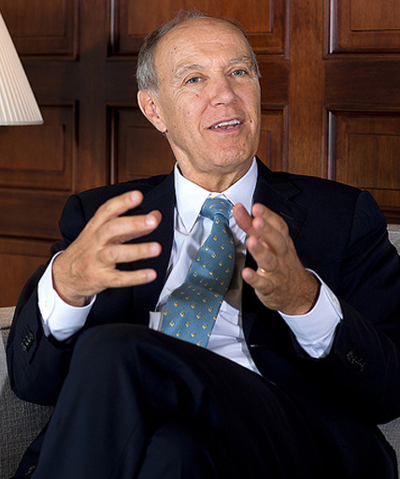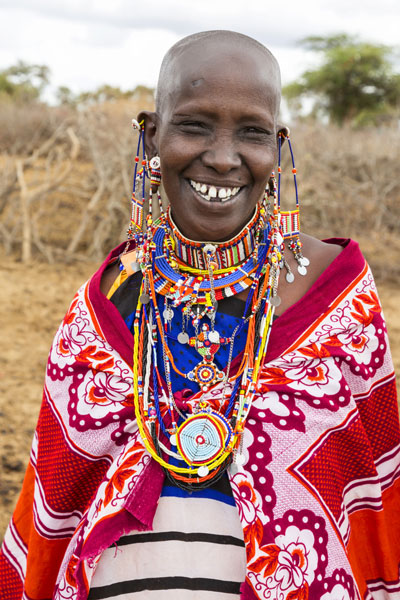As the global forum for intellectual property (IP) policy, WIPO plays a pivotal role in shaping the IP laws and systems which harness the benefits of innovation and creativity. But achieving consensus among 187 countries is ever more challenging. As he begins his second term at the helm of the Organization, WIPO Director General Francis Gurry describes how IP is becoming a “key geopolitical issue of the 21st Century,” and the implications he sees for international IP law-making.

"All countries have an interest in the inclusiveness and
widest possible acceptance of the
international IP system."
How do you see the IP landscape evolving?
IP has been on a journey from the periphery to the center of the economic system. Many countries, including the world’s four largest economies – the USA, China, Japan and Germany - have explicitly recognized the central role of IP in their economic future. This means that competition will increasingly focus on innovation and on IP, raising the stakes in the field of IP.
In this context, the continuing absolute neutrality of the WIPO secretariat is vital in our handling of what promise to be ever-more challenging negotiations.
Why do you think it is becoming more difficult to reach international agreements on many issues?
This, I believe, stems from the profound changes resulting from the geopolitical shift in the world’s economic center of gravity over the last 20 years. This is altering the interests and positions of actors in international negotiations and making it increasingly difficult for member states to agree on proposed normative measures.
We have to accept this reality and try to identify opportunities where interests are sufficiently aligned to permit agreement - as the member states were able to do in the negotiations to conclude the Beijing and Marrakesh Treaties. I hope it will be possible to reach such fruitful outcomes for the other items on our agenda. I would say, however, that the nature of the current operating context favors the specific and measurable over the general and political.
What are your priorities in the current copyright law agenda at WIPO?
First, encouraging speedy ratification by member states of the Beijing Treaty on Audiovisual Performances and of the Marrakesh Treaty to Facilitate Access to Published Works for Persons Who Are Blind, Visually Impaired or Otherwise Print Disabled, which were concluded in 2012 and 2013, respectively.

in Morocco on June 27, 2013. (Photo: WIPO/Berrod)
The treaties WIPO administers fall into different categories. Some set standards for national laws, like the Beijing Treaty, which sets minimum standards of protection for performers. Others seek to facilitate action. The Marrakesh VIP Treaty will make it easier to exchange accessible format works across borders, helping to ensure that people with print disabilities can get hold of the books they need. The Accessible Books Consortium, that we launched in June 2014, (see Accessible Books Consortium: Breaking Down Barriers to Accessibility) will help give practical effect to that treaty.
A second priority is taking forward the negotiations on broadcasting rights. WIPO needs to demonstrate that it can deal with the IP implications of all levels of technology, including the most highly developed. Recent discussions in the WIPO Standing Committee on Copyright and Related Rights (SCCR) have given us a better technical understanding of contemporary broadcasting and the need for reform. But this has not yet translated into a consensus on when to go forward with the proposed new treaty.
It is important that member states reach a consensus on this, not least because broadcasting organizations generate enormous economic value. Just recently, the International Olympic Committee reported that it had agreed to sell to NBC Universal in the USA the broadcasting rights for the Olympic Games between 2021 and 2032 across all platforms for US$7.75 billion. That’s just for the sale of rights in one country, and for one major event. Imagine the sums involved for broadcasting in all countries across all events!
What will be the next copyright issues to be addressed at WIPO?
There is no consensus among member states yet as to the way forward with new issues for the SCCR agenda. Some feel that WIPO’s activity in this area should slow while the new treaties gain international acceptance. Others feel that there are specific issues that could be tackled.
At the broadest level, I believe the most important question is the need to adjust territorial IP legal systems to serve the reality of a global digital content marketplace. But this is not primarily a legislative or normative matter. It is a complex question which needs a worldwide dialogue between governments and all the different actors in the digital marketplace.
Can you say more about your call for international dialogue on copyright in the “global digital content marketplace?”
The global digital content marketplace already exists for illegal services. Our challenge is to make it as easy to get content legally as it is to get it illegally. This is very difficult because no one actor or group of actors, whether public or private, can assume the task. It is an enormous undertaking covering all forms of cultural expression and entertainment worldwide.
We can only edge towards the goal of establishing a seamless and legal global digital content marketplace by identifying specific, actionable issues that can be resolved along the way.
It is critically important that we create a dialogue around these issues to ensure that copyright can continue in the digital age to serve its basic function of financing cultural production. WIPO stands ready to facilitate a global dialogue on these important issues.
What is the status of other current IP treaty negotiations, such as the draft Design Law Treaty?
The studies carried out for the WIPO Standing Committee on Trademarks, Designs and Geographical Indications (SCT) show enormous diversity in the procedural rules for applying for design protection in different countries. For design protection to be effective, it must be accessible and to be accessible, the procedures involved need to be simple and relatively uniform.
The draft Design Law Treaty should help us attain this objective. It also seeks to introduce at the international level a novelty grace period (under certain circumstances) for the disclosure of a design. This will particularly benefit small, independent designers, many of whom are unaware that the disclosure of a design can result in their not being able to protect it subsequently by means of a registration.
Design is an increasingly important part of innovation as a means of product differentiation and competitiveness. Consider, for example, the disputes between Apple and Samsung where the role of design is as important as that of patents.
What can you tell us about the negotiations on genetic resources, traditional knowledge and folklore?

the practical tools and expertise they need to use IP to their advantage.
(Photo: iStockphoto © Britta Kasholm-Tengve)
The negotiations taking place in the Intergovernmental Committee on Intellectual Property and Genetic Resources, Traditional Knowledge and Folklore (IGC) are of fundamental importance to WIPO. They express the aspirations of developing countries, in particular, to ensure the IP system addresses all knowledge systems and recognizes the contribution that has been made - and continues to be made - to humanity by traditional knowledge (TK) systems. In fact, all countries have an interest in the inclusiveness and widest possible acceptance of the international IP system. A balanced and satisfactory outcome to the IGC’s negotiations will contribute to this.
The challenge is to identify the precise areas in which IP can protect - in a clear and certain manner - the specific value that these knowledge systems add. Since TK systems are highly diverse, covering both oral and written traditions, that task is extremely complex. In general, it helps to deal with concrete elements, rather than broad general propositions which may lead to uncertainty. For example, if it were decided that sacred names should be protected, it might be helpful to propose a register, which would enable countries to accept or refuse the effects of protection, rather than simply stating that sacred names should be protected.
Why has reform of the Lisbon System for the Protection of Appellations of Origin moved up the international IP agenda?
Globalization has opened markets and created opportunities for commercializing agricultural produce. Geographical indications and appellations of origin allow producers to distinguish the quality of their products by reference to their geographical origin. In a world characterized by increasing levels of standardization, distinctiveness has acquired important value as consumers increasingly seek high quality, authentic products.
Although it’s been in existence for over 50 years, the Lisbon System has attracted a membership of just 28 countries. The current negotiations aim to make the System more flexible, and better adapted to the different national and regional legal systems for the protection of geographical indications, as well as to allow competent intergovernmental organizations to participate in it. The big challenge for member states is to find an appropriate balance between depth of protection, on the one hand, and breadth of participation, on the other hand. This is a common balance in IP treaties: as a general rule, the deeper the protection, the narrower the participation.
How do you see WIPO’s other global IP protection systems evolving?
The Patent Cooperation Treaty (PCT), the Madrid System for the International Registration of Marks, and the Hague System for the International Registration of Industrial Designs all continue to experience strong growth. These systems provide cost-effective options to secure international protection of IP and are an indispensable part of the global innovation ecosystem. Growth in their use in 2013, in fact, outstripped national and global economic growth rates.
In 2013, the PCT grew by 5.1 percent, and for the first time in its history the number of international patent applications filed in a single year passed 200,000. Similarly, a record number of international applications were filed under the Madrid System, which grew by 6.5 percent. I believe the volume of applications filed through the Madrid System will double over the next five to ten years as the globalization of markets reinforces the importance of branding.
Despite 15 percent growth in 2013, and the recent accession by the Republic of Korea, the Hague System remains much smaller but has tremendous growth potential. Its expansion - China, Japan, and the USA are all expected to join in the coming months - means that its geographical scope will soon cover an area responsible for around 95 percent of design registrations worldwide. This will lead to a profound transformation of the System. WIPO will have to balance the needs of these new members, many of which provide for novelty examination of designs, with the users’ demand for a system that remains effective and easy to use.
What other opportunities and challenges do you see for WIPO in the coming years?
Without diminishing the importance of treaties, there are rich opportunities for international collaboration that do not involve law-making or norm-setting. We can achieve a lot through practical projects that help IP offices manage the rising global demand for IP titles. Take for example the Digital Access Service (DAS), which offers a rapid, secure, and inexpensive means of exchanging priority and similar documents between IP offices; or the Centralized Access to Search and Examination (CASE) platform, which facilitates the sharing of search and examination information between IP offices. These are important elements of shared technical infrastructure which improve the quality and efficiency of global IP operations.
Public-private partnerships such as WIPO Re: Search and the Accessible Books Consortium also provide opportunities for practical and fruitful international cooperation.
Over the last two decades, the trend has been towards greater involvement by the enterprise sector in public policy. We need to capture the advantages of such increased engagement without altering the character of WIPO as an intergovernmental organization. That means listening to the enterprise sector, although not negotiating with it. It also means seeking opportunities to mobilize the enterprise sector’s considerable resources to support the implementation of policy decided by member states.
At a more abstract level, our challenge is to ensure that WIPO remains a relevant and trusted forum for IP. Maintaining relevance, and keeping pace with change, is increasingly difficult for intergovernmental organizations such as ours, operating in a multi-tiered and multi-speed world. But while it is not always easy to achieve consensus within the multilateral framework, I firmly believe that multilateralism offers the unique and indispensable values of legitimacy and universality, which are so important for developing successful solutions to global challenges.


